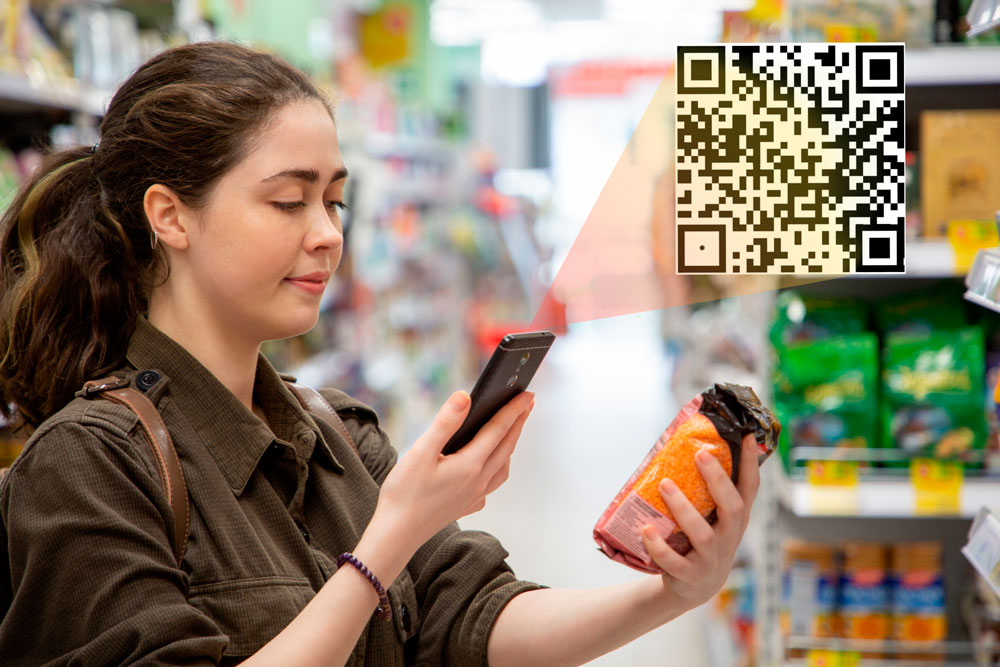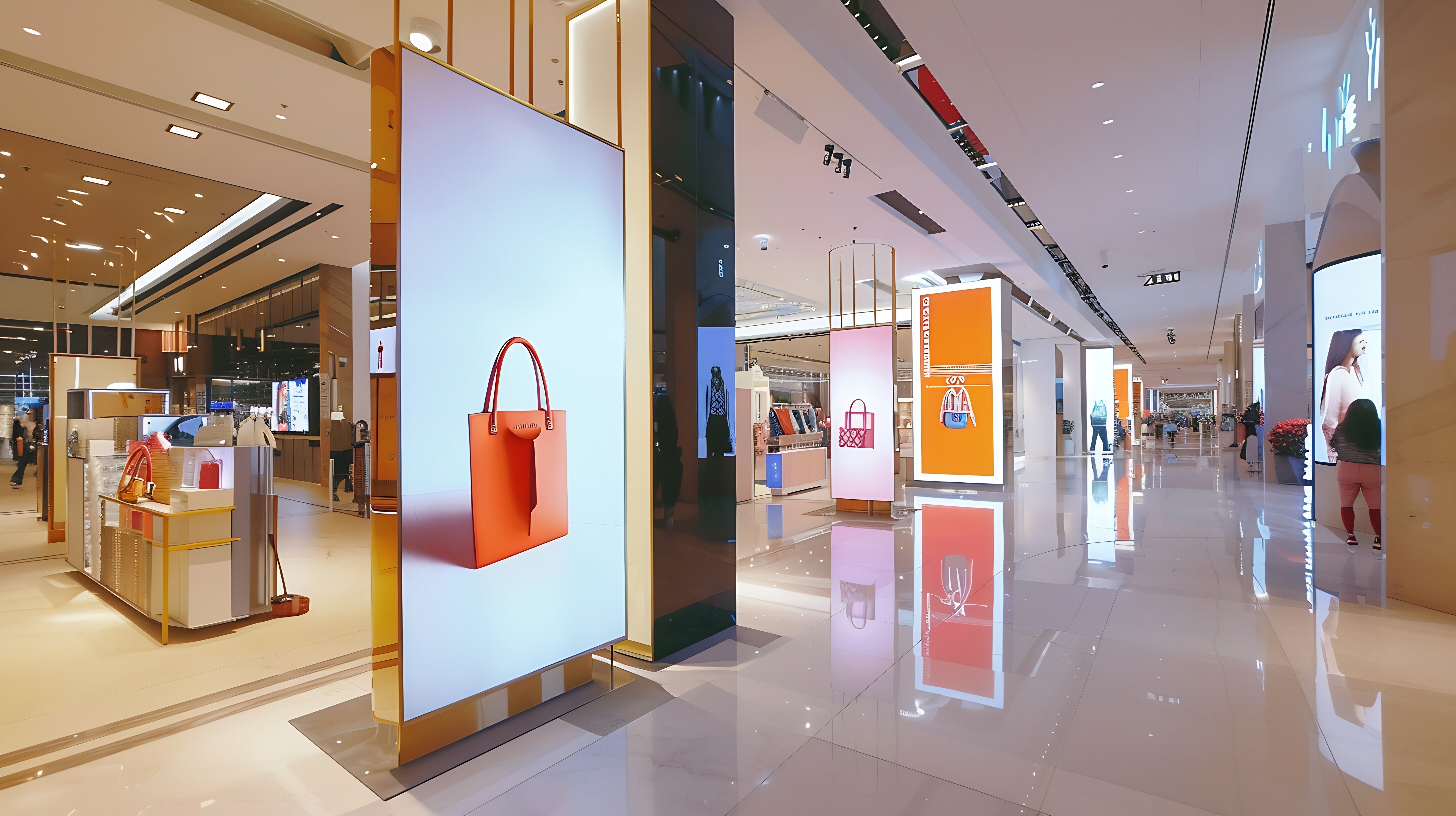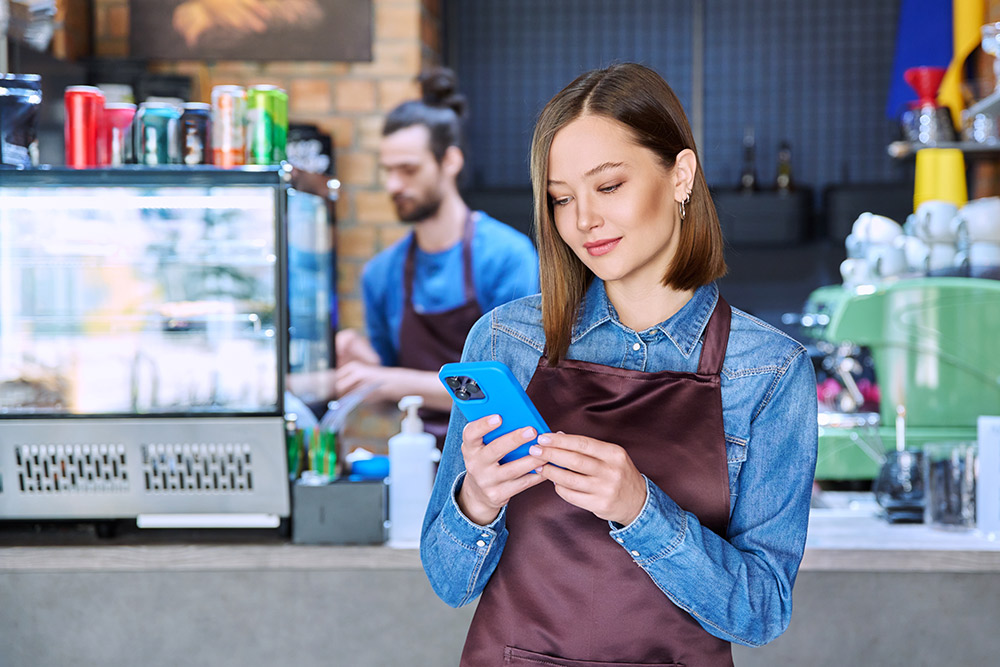A revolution in the retail landscape is underway, driven by the simple yet powerful act of scanning a QR code. Poised to surpass the foundational role that linear barcodes played nearly 50 years ago, 2D barcodes like QR codes are expected to become the norm for consumer packaged goods and retail globally by 2027, according to GS1 US.
This evolution opens up various opportunities for businesses and consumers, which can be leveraged today.
1. Bridging Physical and Digital Experiences: The Power of “Infinite Aisles”
To stand out in a competitive market, retailers are adopting technologies like QR codes to merge the in-store experience with the digital world.
Already familiar with QR codes, consumers can scan them to access an extensive online catalog while browsing the physical store. This strategy, known as “Infinite Aisles,” allows shoppers to order out-of-stock products and deliver them to their homes, creating a connection beyond the point of sale.
2. Uncovering Consumer Preferences
By incorporating QR codes into displays, labels, and brochures, retailers gain a deeper understanding of in-store customer behavior. Each scan provides valuable data about their preferences, flow, and response to business strategies.
Real-time feedback allows for adjustments to approaches and enhances the in-store experience.
3. Increasing Brand Transparency
With the rise of QR codes on packaging, consumers can easily access detailed information about a brand’s origin and values. These codes allow companies to highlight sustainable and transparent practices, setting new standards for the industry.
By providing easily accessible information through 2D barcodes in-store, retailers meet the growing consumer demand for transparency.
4. Optimizing Communications: Automatic Recognition and Differentiated Access
The dynamic conversation between brands and consumers is strengthened with QR codes, empowering customers to actively participate. Elevating this experience, FrogmiⓇ SmartQR takes communication to the next level by providing automatic customer recognition through QR code scanning.
Upon performing this action, the solution identifies users and grants them personalized access based on their profile. For example, if it is a VIP customer, it will give them access to a portal with exclusive offers and priority support with configurable, traceable, and automated workflows..
Conclusion
Embrace the future of retail by adopting QR codes and SmartQR. By knowing who is on the other side of the code, new opportunities open up for more direct and effective communication, deepening the value proposition.
Let data guide your efforts, and pay attention to consumer profiles and preferences. This way, you can build deeper connections and encourage repeat purchases, both in-store and online.
With QR codes, retail is evolving, one scan at a time.




